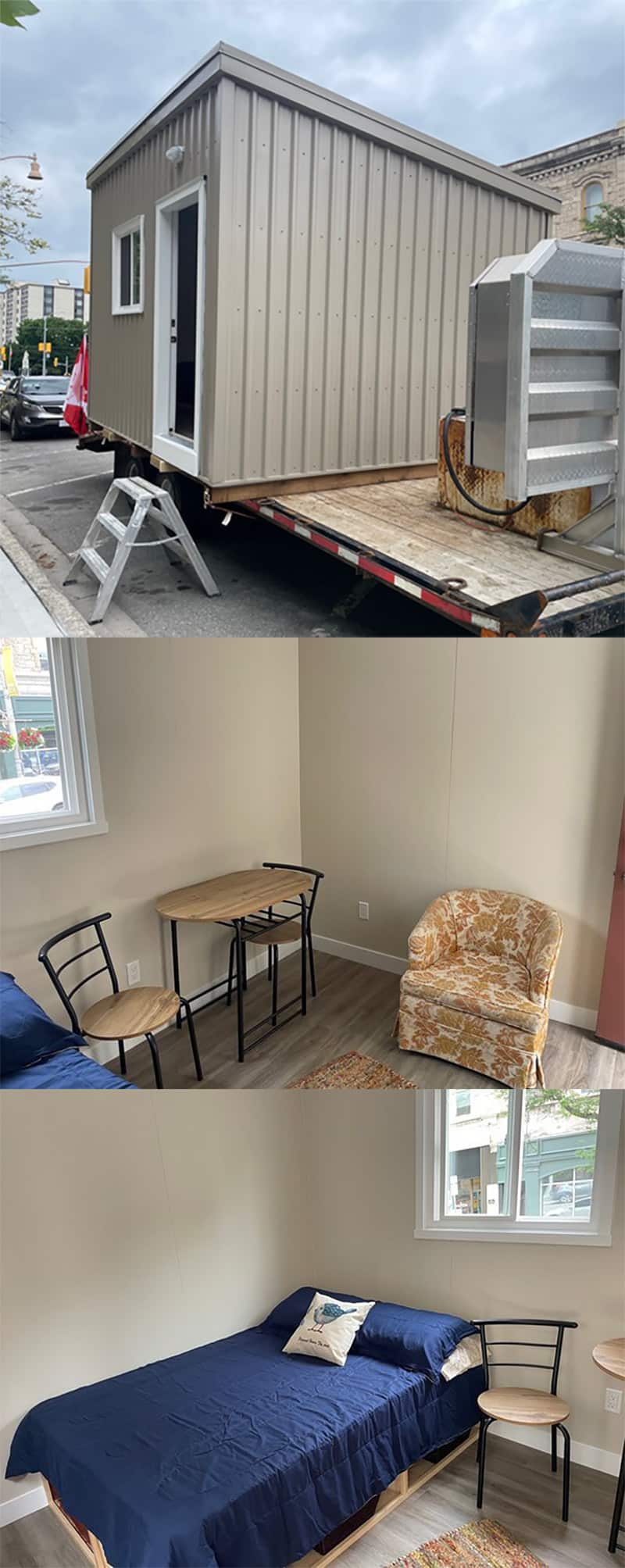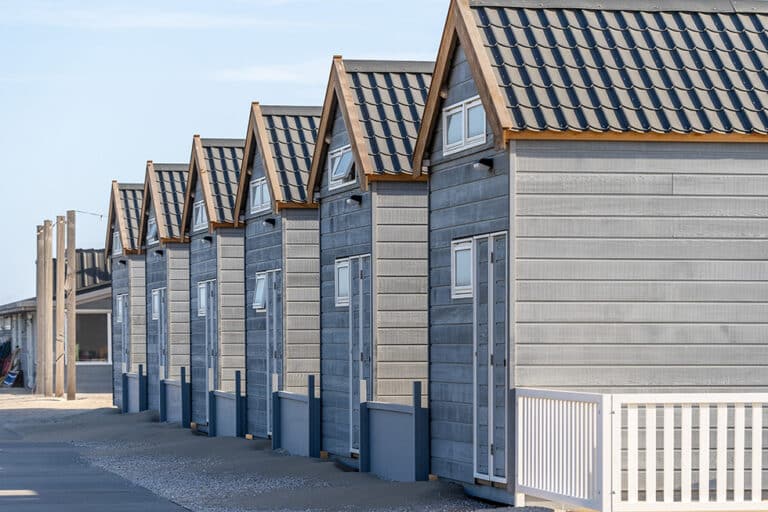I recently had the pleasure of speaking on CBC KW about tiny homes and their future as part of Canada‘s housing paradigm. Here is the news story which accompanies the interview.
Below is a look at the problem and the solutions.
Canada and Ontario need to reimagine a supportive housing programme that has been in place since World War II and which is failing many people. We need to broaden our understanding of supportive housing and support services for the unhoused by including tiny homes of approximately 150 square feet as an option for those living on the streets and in tents.
For the past 6 months I have been supporting a local group looking at establishing Tiny Homes in our city. These are one room, approximately 150 square foot units with common bathroom and kitchen facilities. These come with health care and mental health support. In Canada, there are many examples of these in places such as Kitchener and Peterborough Ontario.
With these in mind, the Guelph Tiny Homes Coalition came in front of Guelph City Council to seek support in principle for this endeavour.
After an hours long meeting, Guelph City Council unanimously approved the principle of tiny homes. These homes are euphemistically referred to as structured encampments by Guelph but are Tiny homes to many. To me, the title is irrelevant. What is most important is that where these are located, they provide a safe place to stay for those often living rough. I believe that municipalities must advocate for these to become part of the federally and provincially supported housing continuum for those living outside and endangered by their living situation.
In the past, supportive housing often meant putting a homeless person in a shelter whether it was a permanent establishment or a hotel. I have driven many homeless people to hotels and have seen first hand why this does not work for everyone.
We need to be very clear: for some people, living in an apartment or a hotel with no permanence smacks of confinement with the threat of the roof over the head being removed at any moment. Often times people living outside have some form of emotional or psychological challenge – they have experienced things being taken away and they being left worse off. They have experienced their pets, their partners their belonging not being welcome where they are sheltered. This means they cannot face the idea of living in a hotel room or shelter as it is too confining and restrictive and without the emotional supports many of us take for granted.
A homeless person may experience paranoia, schizophrenia, bipolar disorder that affects the capacity to live in accordance with accepted social norms. They could suffer from a phobia, such as claustrophobia, or some similar neurological disorder that brings on anxiety or psychosis. Moving directly from a tent to a shelter is not a consideration for those living in fear.
It is also not a consideration for many people who are victims of abuse. Many women living outdoors, will not go into shelters. They fear repeated sexual and physical assault. Sometimes their trauma is reignited by the very thought of such confinement. Some men and some who are transgender have similar fears.
Over the last 40 years, the provincial and the federal government have failed Canadians on the housing and mental health fronts.
Supportive housing, cooperative, housing and nonprofit housing were supported by the federal and provincial governments prior to the 1990s and kept housing costs down for everyone. To get national and provincial debt under control, successive governments have abandoned these programmes. No effective funding has been provided for coop and social housing in many years. Today we have a minimum $1 trillion low cost housing problem because of this inadequacy. .
This minimum trillion-dollar issue has had a twofold impact. Foremost, it has meant that many people are unable to afford the inflated cost of purchasing or renting housing in today’s very expensive market.
Housing price inflation has been significantly affected by supply limitations. This shortage has raised the bottom end of the housing market in the extreme. It had also meant that social housing providers are extremely limited in the capacity to assist people living in dire straits. A 5 to 10-year wait for affordable housing is not a rarity.
At the same time as a federal government and the provincial government got out of affordable housing, they also reduced funding for mental health support. It’s not a coincidence that more and more people are self-medicating with such substances as fentanyl, crack, and meth.
No one put down as their high school career goal: to be an addict; to be mentally ill; to be homeless; to be working poor. Many people are driven to these substances by circumstances and our nation’s and provinces’ failure to adequately support mental health and addiction programmes.
Canada and Ontario need to realign our priorities and broaden the housing paradigm. We must provide more forms of housing including tiny homes in numbers that will reduce housing costs for everyone and ensure people have a safe roof over their heads. We might need to embrace a model of housing similar to The Netherlands where 60% of all housing is rental and where the standard of living is equal to or superior to Canada’s.
Today, if you own a house mortgage-free, you might be a millionaire.
If you own a house with a mortgage, you might be worried about inflation and interest rates and whether you might have to leave your home.
If you rent, you might be worried that without effective rent controls you will be evicted because of inflated prices or renoviction.
If you live on the streets: you certainly can fear that people will look at you as a threat when poverty and substandard mental health programme and housing programmes are the problem.
Let’s do the right thing and restore the Canadian dream to everyone.
Guelph Tiny Houses:


